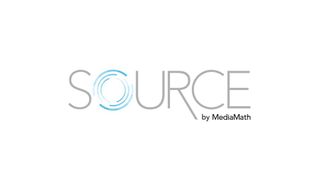MediaMath Leading Effort to Create New Ad Supply Chain

Looking to fix what has evolved into a broken supply chain for digital media, technology company MediaMath said it is building a new system that will deliver transparency, addressability and the power of artificial intelligence to advertisers.

To build what it is calling Source, MediaMath recruited anchor partner programmatic ad platform Rubicon Project and has added a number of media companies, data suppliers and other technology companies who have agreed to a new set of contracts and ways of doing business.
CEO Joe Zawadzki said MediaMath is committed to putting all of its new business through Source by the end of 2020.
Major advertisers’ complaints about digital advertising have ranged from fraud to not knowing how much of their spending is going to media after charges for data and technology.
“We set out to change marketing for the better," said Zawadzki. "Unfortunately, the purity of our industry’s intentions when we built the digital infrastructure have gotten lost in fraud, waste, and irrelevance. It’s created more ads instead of good ads and minimized the value of quality supply in its purest and most transparent form. As some of the earliest pioneers of programmatic, we feel called to help fix what’s broken.”
MediaMath opted to start an entirely new systems, rather than trying to fix the old one. And it hand selected top companies in each category to be a part of building it.
“Let’s show people that this new environment is a better way to advertise and then scale it up and invite other people to it,” Zawadzki said, explaining the strategy.
Broadcasting & Cable Newsletter
The smarter way to stay on top of broadcasting and cable industry. Sign up below
Among the companies opting to work with MediaMath on source are Telaria, Acoustic, Akamai, Business Insider, Crackle Plus, Havas Media, IBM Watson, Inscape/Vizio, IRIS.TV, News Corp, Octopus Interactive, Oracle, Publishers Clearing House and White Ops,
MediaMath itself has made a huge investment in Source, spending more than $60 on technology including new servers to house the new supply chain, Zawadzki said. MediaMath gets paid a percentage of the media investments that go through the system..
With the growth of streaming, the buying and selling of television and video is getting to be more like digital, MediaMath sees TV being a big part of Source.
“We are working closely with the TV ecosystem to develop this and we think it’s going to be the infrastructure that powers the entire TV industry in the years to come,” said Jeremy Steinberg, global head of ecosystem at MediaMath.
Steinberg said MediaMath was talking to the networks, but it was also talking to MVPDs and that station groups could be included as well.
“We are committed to a level of transparency that will help publishers continue to grow their business as programmatic and addressable becomes an increasingly important part of a buyer’s overall ad budget,” said Mark Zagorski, CEO of Telaria. “This initiative encourages brands to spend more with publishers who are also committed to the core value of transparency. Supply chain transparency contributes to a well-lit, open marketplace where all sides can transact in a trusting and good faith manner.”
Ultimately, MediaMath believes that having a cleaner supply chain will benefit media companies, advertisers, agencies and ultimately consumers, Steinberg said.
“Our clients are demanding a more sophisticated approach to programmatic, with custom and curated options that just aren't meaningful without full control of the media supply chain,” said Andrew Goode, executive VP, head of programmatic, Havas Media Group. “And for us, full control means having the ability to make financial and operational choices. Growing our partnership with MediaMath via support for Source ensures that we will be able to continue to innovate and evolve within the biddable ecosystem on behalf of our clients."
Jon has been business editor of Broadcasting+Cable since 2010. He focuses on revenue-generating activities, including advertising and distribution, as well as executive intrigue and merger and acquisition activity. Just about any story is fair game, if a dollar sign can make its way into the article. Before B+C, Jon covered the industry for TVWeek, Cable World, Electronic Media, Advertising Age and The New York Post. A native New Yorker, Jon is hiding in plain sight in the suburbs of Chicago.

